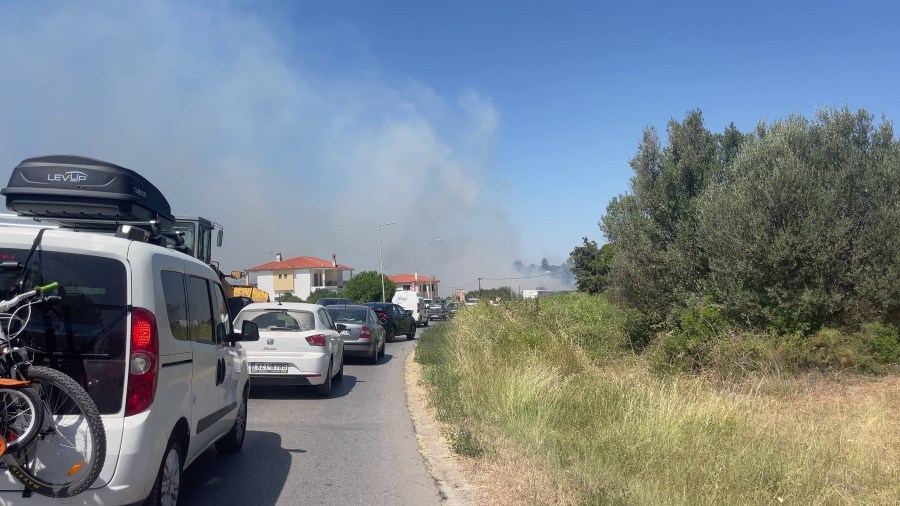HONOLULU (KHON2) — Hawaiʻi wildfires move fast. When one breaks out near your home, you may have only minutes to get out. Planning ahead is critical for evacuating kūpuna, keiki and pets.
These situations take more time and more care. Each group needs special support, and all of them depend on you. Preparation is the difference between panic and action.
Make a family plan
Start by knowing your risks. If your home is in or near a forest or grassland, wildfires are a threat. Talk with your family and neighbors about evacuation routes, transportation and shelter options.
Fill out a written communication plan and store paper copies with your emergency kit and digital copies in your family’s cloud storage. Include your contacts in your cell phone and keep it charged.
Practice your evacuation plan. Everyone needs to know what to do and where to meet. Include alternatives in case roads are closed or cell service fails.
FEMA has set up 43362 to text SHELTER and your ZIP code to find open shelters. You can click here to learn more.
Plan with kūpuna in mind
Older adults face more risks in wildfires. They may have mobility issues or need medical equipment that runs on electricity.
“Research has shown that just 25% of older adults who use essential medical equipment requiring electricity have a backup power source for it,” said the National Institute for Aging.
If you use oxygen, a power chair or any other device that needs electricity, talk to your doctor now and ask for manual alternatives or backup supplies.
When evacuating,:
- Include essential health information in your emergency kit.
- Keep extra hearing aid batteries, prescription meds and a copy of your insurance cards with you.
- If you need help, tell your local emergency services in advance. Some areas offer help through “Citizens at Risk” programs. Ask your local government what’s available.
You can click here to learn more.
Protect your keiki
Children are more affected by wildfire smoke than adults. Their lungs are still developing, and they breathe more air for their body size.
Watch for coughing, shortness of breath or chest tightness. If smoke is heavy, stay indoors, shut all doors and windows and avoid vacuuming or burning candles. If possible, make a “clean room” with a HEPA air filter.
Do not use disposable masks on children under 3. They are not effective and can be dangerous.
If you must evacuate, bring comfort items like a favorite toy(s), blanket(s) or snacks. Reassure your keiki and keep routines when possible.
Know that children can show stress in different ways. They will be clingy, fearful or have trouble sleeping. So, be patient and keep talking to them.
You can click here to learn more.
Care for pets early
Pets need their own plan and kit. Microchip your pets or use a collar with ID. Assign one family member to be responsible for each animal. Practice loading cats and dogs into their carriers.
If the pet(s) can’t come with you, leave doors open and let responders know where they are.
Pack leashes, carriers, water bowls, food, medicine and a photo of your pet. Include at least three days of supplies, ideally seven. Do not tranquilize your pets; they need their instincts sharp.
After the fire, keep pets leashed or in a carrier. Debris, broken glass and downed lines are common.
Watch for signs of smoke irritation: coughing, red eyes, discharge, heavy breathing or weakness. If you see these signs, get them to a vet right away.
You can click here to learn more.
Gather emergency supplies now
Build an emergency kit that can last three to seven days. Keep it in a spot that’s easy to grab quickly. You need to include:
- Water (one gallon per person per day).
- Nonperishable food and can opener.
- First-aid kit.
- Flashlight and batteries.
- Medications.
- Sanitation supplies.
- Local maps.
- Cell phone chargers.
- ID and important documents.
- Change of clothes and shoes.
- Glasses, hearing aids, assistive devices.
Make a checklist of the things you can’t store in the bag. When it’s time to evacuate, remember the five Ps:
- People (and pets).
- Prescriptions.
- Papers.
- Personal needs.
- Priceless items.
Stay informed
Sign up for weather alerts to keep informed. It’s important to know that a fire weather watch means conditions are favorable for wildfires while a red flag warning means wildfires are likely to breakout within 24 hours. So, be ready to evacuate.
Keep a battery-powered, hand-crank or HAM radio in your kit. If your area loses power, this may be your only way to get updates.
After the fire
After the fire doesn’t mean everything is completely safe. Follow these guidelines to help secure your safety.
- Wait for officials to say it’s safe to return, but you’ll still need to check air quality first.
- Wet down ash before cleaning.
- Children and pets should not help clean or be near ash.
- Familiar scents may be gone and pets may become disoriented.
- Give them time. Bring out their bedding or toys to help them adjust.
Don’t forget that recovery takes tim and that preparation is the first step to recovery. Kūpuna, keiki and pets may all feel the stress much more deeply than you do.
